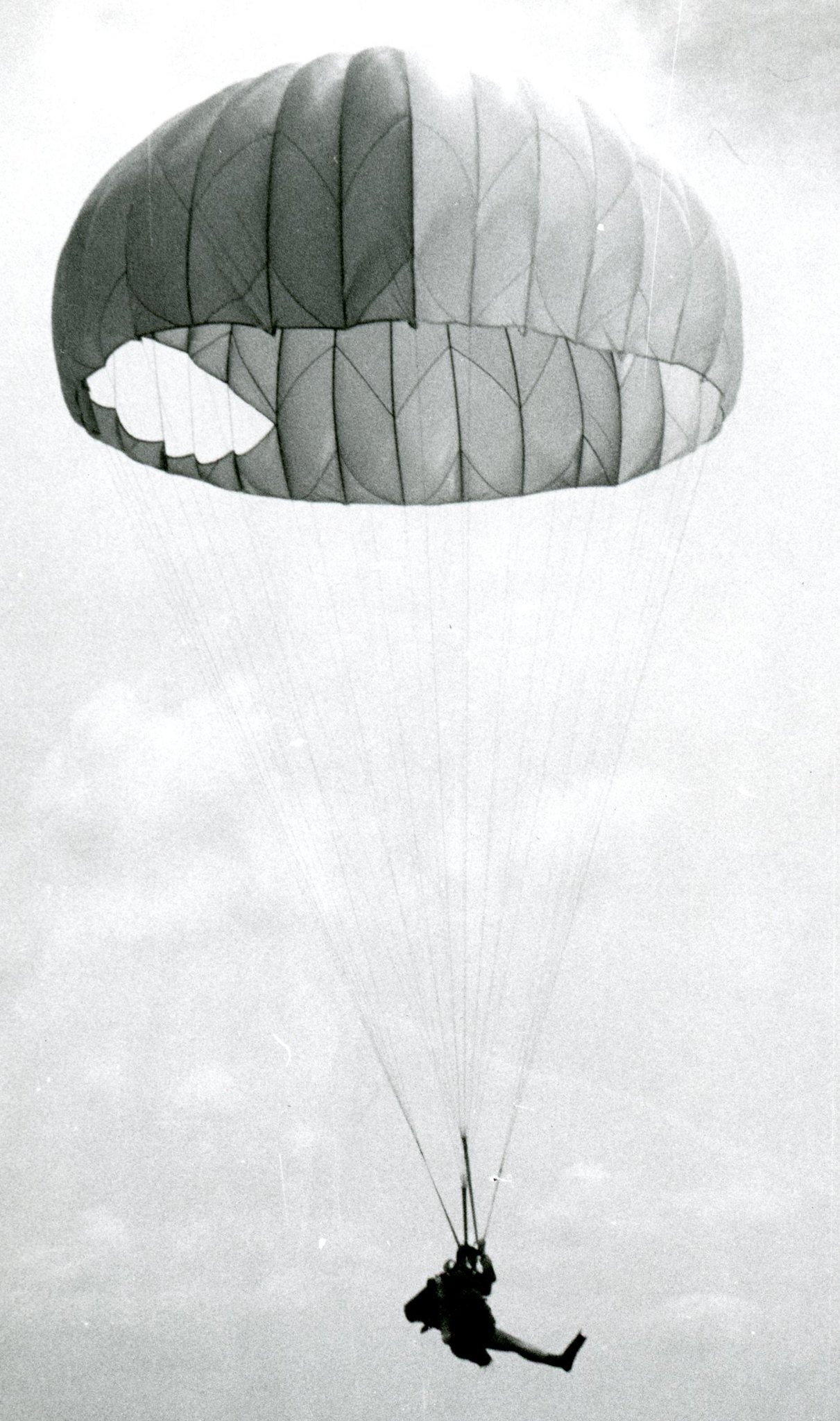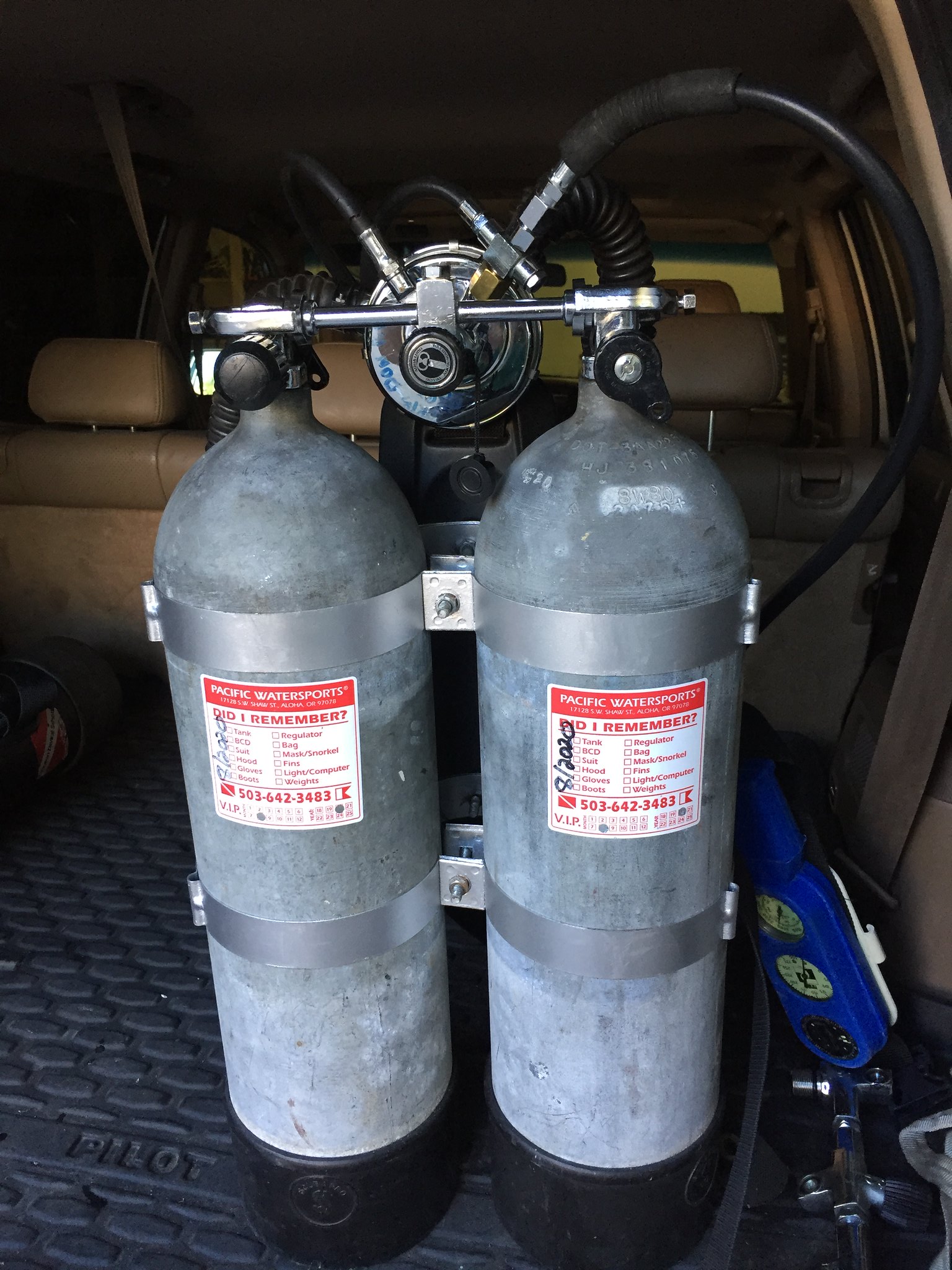Okay, I’m going to have to comment here, as I have been working in the occupational safety and health field for decades, and am a retired Certified Safety Professional. I also have a Master of Science in Public Health (MSPH) degree, specializing in industrial hygiene.
First, let me address this thing about “muscle memory”; there is no such thing. Muscles don’t have memory—brains do. What you are really talking about is repeated exercises of the same thing so that they became “second nature.” But this isn’t “muscle memory. Muscles don’t remember, they contract.
Now, someone above mentioned “failure points” when talking about independent doubles and then about “cheater bars,” which are a means of linking two tanks through their valve without the permanence of a manifold. The “cheater bar” attaches to the O-ring on each valve. Yes, these are potential failure points, but the real question is “when do they fail?” Well, If the yokes are not sufficiently tight, or cockeyed, they’ll fail when pressurized. If the harness system is using two bands, the potential for a cockeyed configuration is virtually eliminated. If pressurized, and they don’t fail, the possibility of failure as remote at best, and nearly down to zero.
 PJ Okinawa Dive003 by John Ratliff, on Flickr
PJ Okinawa Dive003 by John Ratliff, on Flickr
This is a photo I took of a U.S. Air Force Pararescue dive for currency (and lobsters) off Okinawa in 1968. We are using twin 72s, with the U.S. Divers Company twin manifold. This manifold consists of a brass-to-brass connection, which when enough force is applied, will remain tight and leak-free. I have a special large crescent wrench to tighten my own twins (I use smaller tanks, but like back-mounted doubles). This manifold also has a 500 psi J-valve on one of the tanks, so that is the “reserve” air. Breathing gets hard, you trip the J-valve, and surface (this was before gauges and the safety stop).
In the above photo, count the number of failure points on their scuba units:
1. Manifold O-ring.
2. Calypso regualator first stage, 2 O-rings and one seat.
3. Calypso regulator second stage, 1 seat.
So the entire scuba has only 5 failure points. Now, go out and count the failure points on your scuba units. See who has more.
 142720099_191814152628614_6615637713269724809_o by John Ratliff, on Flickr
142720099_191814152628614_6615637713269724809_o by John Ratliff, on Flickr
Here you can see the gear that was worn on these parascuba jumps (here by the three PJs who jumped on Gemini VIII).
 142309158_5274939835851296_4955705790799075275_o by John Ratliff, on Flickr
142309158_5274939835851296_4955705790799075275_o by John Ratliff, on Flickr
Here you can see the clearances for jumping out of the HU-16B Albatross’ hatch (it wasn’t actually a door, as this was a water-tight hatch for use on the water.
 Parascuba-BAW image001 by John Ratliff, on Flickr
Parascuba-BAW image001 by John Ratliff, on Flickr
We made parascuba jumps with twin 42 cubic foot tanks with this U.S. Divers manifold, and never had so much as a single leak with them. If anything would cause a leak, it would be a PJ (Pararescueman) going through his lines in a flip, and that never happened (we did have a manifold guard, but there were still scenarios where it was possible to cause problems.
What I’m saying is that the failure points on the older style manifold are fewer than on the new, multi-outlet manifolds with their shutoff valves. This is due to the fewer parts and actual failure points.
 IMG_1629 by John Ratliff, on Flickr
IMG_1629 by John Ratliff, on Flickr
Here’s my use of the “cheater bar,” which has two extra O-ring connections. Note that I’m using double bands to prevent any movement of the tanks.
SeaRat
NAUI #2710
First, let me address this thing about “muscle memory”; there is no such thing. Muscles don’t have memory—brains do. What you are really talking about is repeated exercises of the same thing so that they became “second nature.” But this isn’t “muscle memory. Muscles don’t remember, they contract.
Now, someone above mentioned “failure points” when talking about independent doubles and then about “cheater bars,” which are a means of linking two tanks through their valve without the permanence of a manifold. The “cheater bar” attaches to the O-ring on each valve. Yes, these are potential failure points, but the real question is “when do they fail?” Well, If the yokes are not sufficiently tight, or cockeyed, they’ll fail when pressurized. If the harness system is using two bands, the potential for a cockeyed configuration is virtually eliminated. If pressurized, and they don’t fail, the possibility of failure as remote at best, and nearly down to zero.
 PJ Okinawa Dive003 by John Ratliff, on Flickr
PJ Okinawa Dive003 by John Ratliff, on FlickrThis is a photo I took of a U.S. Air Force Pararescue dive for currency (and lobsters) off Okinawa in 1968. We are using twin 72s, with the U.S. Divers Company twin manifold. This manifold consists of a brass-to-brass connection, which when enough force is applied, will remain tight and leak-free. I have a special large crescent wrench to tighten my own twins (I use smaller tanks, but like back-mounted doubles). This manifold also has a 500 psi J-valve on one of the tanks, so that is the “reserve” air. Breathing gets hard, you trip the J-valve, and surface (this was before gauges and the safety stop).
In the above photo, count the number of failure points on their scuba units:
1. Manifold O-ring.
2. Calypso regualator first stage, 2 O-rings and one seat.
3. Calypso regulator second stage, 1 seat.
So the entire scuba has only 5 failure points. Now, go out and count the failure points on your scuba units. See who has more.
 142720099_191814152628614_6615637713269724809_o by John Ratliff, on Flickr
142720099_191814152628614_6615637713269724809_o by John Ratliff, on FlickrHere you can see the gear that was worn on these parascuba jumps (here by the three PJs who jumped on Gemini VIII).
 142309158_5274939835851296_4955705790799075275_o by John Ratliff, on Flickr
142309158_5274939835851296_4955705790799075275_o by John Ratliff, on FlickrHere you can see the clearances for jumping out of the HU-16B Albatross’ hatch (it wasn’t actually a door, as this was a water-tight hatch for use on the water.
 Parascuba-BAW image001 by John Ratliff, on Flickr
Parascuba-BAW image001 by John Ratliff, on FlickrWe made parascuba jumps with twin 42 cubic foot tanks with this U.S. Divers manifold, and never had so much as a single leak with them. If anything would cause a leak, it would be a PJ (Pararescueman) going through his lines in a flip, and that never happened (we did have a manifold guard, but there were still scenarios where it was possible to cause problems.
What I’m saying is that the failure points on the older style manifold are fewer than on the new, multi-outlet manifolds with their shutoff valves. This is due to the fewer parts and actual failure points.
 IMG_1629 by John Ratliff, on Flickr
IMG_1629 by John Ratliff, on FlickrHere’s my use of the “cheater bar,” which has two extra O-ring connections. Note that I’m using double bands to prevent any movement of the tanks.
SeaRat
NAUI #2710





